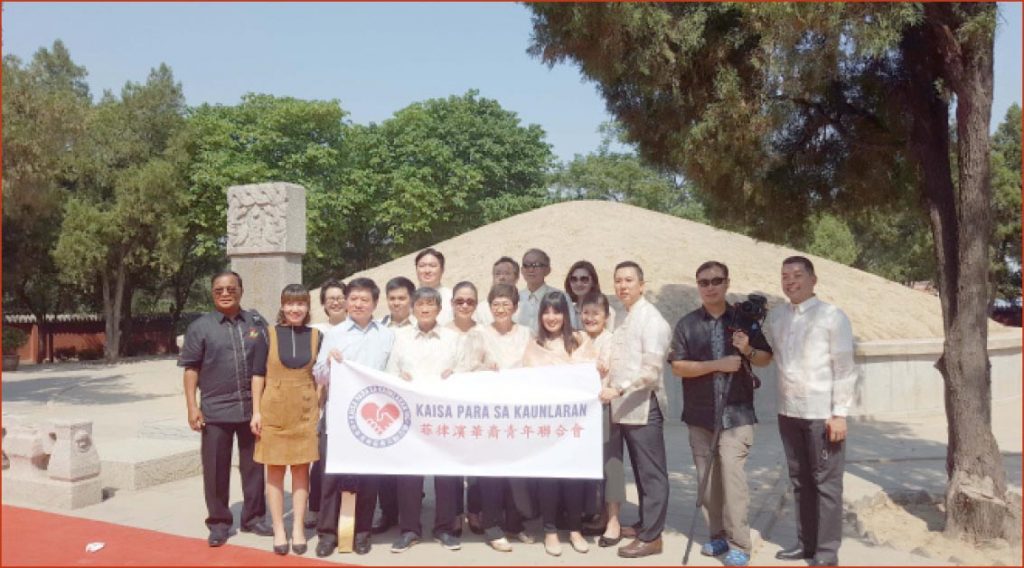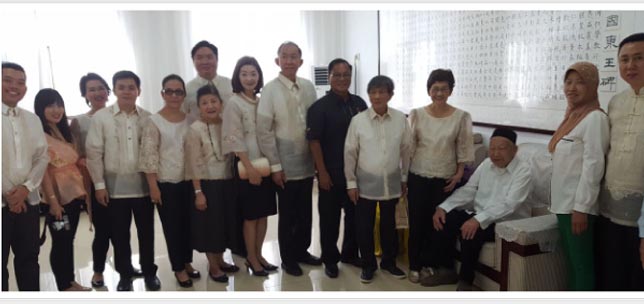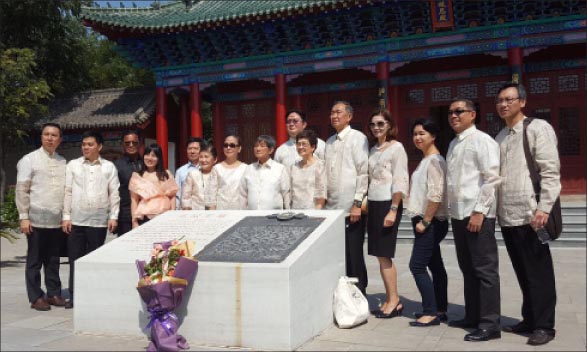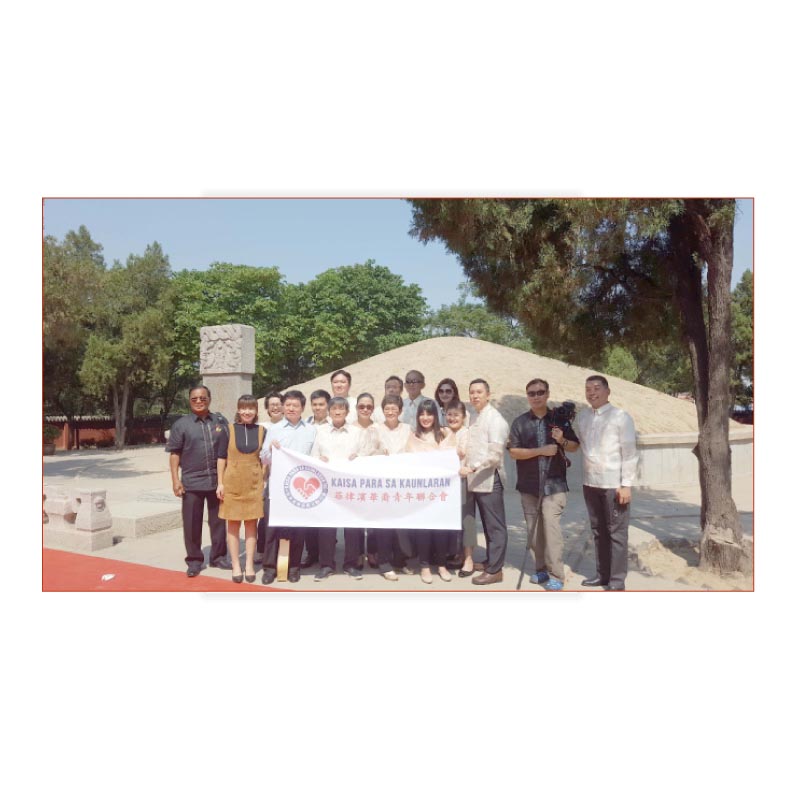
Sept. 13 is officially celebrated in Dezhou, Shandong, China to commemorate the 1417 visit of Paduka Batara, the Sultan of Sulu, to Ming Dynasty Emperor Yong Le. This year, a Kaisa delegation joined the festivities marking the 600th anniversary of this historic event.
Paduka Batara, sultan of Sulu
According to Teresita Ang See’s book, The Ties that Bind: The Saga of the Sultan of Sulu in China, the Sultan’s visit was recorded in volume 325 of the Ming Annals: The Sultan sailed “with a retinue of 340 wives, ministers, and retainers” and presented the Ming Emperor with “a memorial inscribed in gold, and such tributes such as pearls, precious stones, and tortoise shells.” The Sultan also registered with the Chinese Minister of Rites (sort of like a visa office today) as “Sultan Paduka Batara of the East Country, Maharajah Kolamanting of the West Country and Paduka Prabhu.”
The Sultan sailed back to Sulu after a cordial 27-day visit, his boats loaded with gifts from the Emperor that included ‘chinaware, court costumes, pennants or insignia (symbols of the Emperor’s protection and acknowledgement), caparisoned horses, 200 bolts of silk, hundreds of thousands of copper coins, and enough gold and silver to cover the expenses of the trip and still have some profit.’
Unfortunately, the Sultan fell ill with autumn fever (what is probably pneumonia) and died in Dezhou. The grief-stricken emperor ordered an imperial burial for his friend. The Sultan’s first son, Dumahan, returned to Sulu to succeed his father’s sultanate, while Batara’s wife Kamulin, his second son, Andulu, and third son, Wenhalla, stayed to tend to the Sultan’s grave. The Sultan’s family and descendants were given farmlands and lived in prosperity under the Emperor’s protection until toward the end of the Ming Dynasty. To this day, the Sultan’s Dezhou descendants, now 21 generations long and numbering 3,700, proudly trace their roots to that fateful day of Empero Yong Le’s honoring of Sultan Paduka Batara.

600 years later
Kaisa, upon invitation from the Dezhou Sulu Culture Museum, Dezhou Bureau of Culture, Radio, Television, Press and Publication, and Dezhou City Beiying Village and Muslim Mosque Administration Bureau, sent a delegation to bear witness to this momentous event.
The delegation was composed of Ang See, Michael Guzman, Lyonel Ty, Aquino Lee, Sebastian Angliongto, Charles Ng, Ivan Man Dy, Yvette Tan, Paulina Ty, Veronica Lee, Teresita Angliongto, Jan Carlo Angliongto, Angeli Therese Angliongto, and John Hong, with the Angliongtos representing Kaisa Davao.
Also present were Arturo Valdez and Fung Yu Hsu, outdoor sportsmen who are planning to sail the balangay, the native longboat our seafaring ancestors used, around Asia with the hope of sailing it to China.
As soon as the delegation arrived in Dezhou from Beijing on Sept. 12, we were whisked away to the Dezhou Theater to watch a Chinese acrobatic performance choreographed around the story of Sultan Paduka Batara’s official visit to Emperor Yong Le. It was a breathtaking performance that not only showcased the talent and discipline of the acrobatic troupe, but also highlighted the importance of the Sultan’s visit and the Emperor’s high regard for the importance of both countries’ relations 600 years ago.
Everyone was up bright and early the next day. The first stop was the Dezhou City Museum, to open the Kaisa exhibit on the Sultan and his legacy titled “600 Years of Enduring Friendship: Beyond Borders, Beyond Time.”
The exhibit include a background on pre-Spanish Sulu, the Sultan’s death as reported by the Emperor and Ming historians, and the ways in which this friendship between nations has remained strong to this day, including Kaisa’s and the Federation of Filipino-Chinese Association’s efforts in maintaining ties with the Sultan’s descendants.
A short program headed by museum director Ai Jiguang welcomed the Kaisa delegation. There were short speeches on the importance of this momentous event, as well as a symbolic exchange of gifts. After the program, the delegates were given a tour of the beautifully maintained museum.
The delegates then proceeded to the Sultan’s Tomb and Sulu Culture Museum, which China’s state council had declared a national major protected heritage site in 1988. Visitors are greeted by a tall arch proclaiming “The Royal Tomb of the Emperor of Sulu.” The Sultan’s tomb, as well as that of his wife and two sons, are found in this heritage park, which also contains a mosque and is near the vibrant Chinese-Islamic community populated by the Sultan’s descendants and their families.
The delegates met with An Jin Tian, the Sultan’s oldest living descendant. Also present were his wife and son, An Yan Chun, as well as An Jin Tian’s grandchild, who at a few months, is the 20th generation and the youngest of the Sultan’s descendants. Wen Hai Jun and his wife joined the An family in a family photo with the Kaisa delegation. The An and Wen family remembers fondly their first visit to their ancestor’s homeland in Jolo in 2005, which was facilitated by Kaisa and the Federation of Filipino-Chinese Associations. They were warmly welcomed by the local government and the Sultanate of Sulu. Twelve years later, it is Kaisa’s turn to pay their respects to the Sultan’s kin.

A continuation of close ties and friendship
The Kaisa delegates symbolically announced their presence by bowing deeply three times before the tomb of the Sultan, doing the same before the tombs of the Sultan’s wife and two sons. The tombs were characterized by earth mounds surrounded by a raised stone border. In between the gate of the Sultan’s tomb and the burial place is a small courtyard, with a building in the middle where traditional offerings are made, as is common in the tombs of royalty and high ranking officials. These courtyards now house a small museum. Outside this main building are government markers designating the tomb as a heritage site.
Before heading back to Beijing, the delegates passed by the Grand Canal pier, the hundreds-year-old water highway that facilitated trade within China before land travel became convenient. It was on this very canal that the Sultan passed away on the trip back to his homeland. Parts of the canal have been blocked off in modern times, but there is no denying the majesty and history that it instills when looking at it.
There was a palpable sense of awe at being able to witness such a historic event, one that, though obscure in the annals of larger Philippine history, is nonetheless extremely important, pointing to a deep and ancient friendship between two nations, one that spanned the test of time and space.





